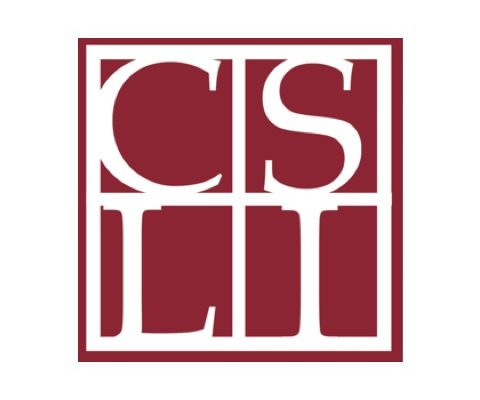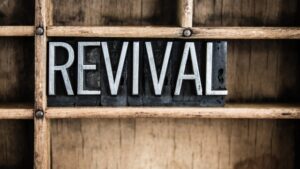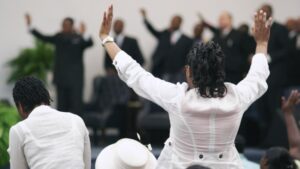Back to series



Revival Transforms the Frontier
On a bleak and wintry day in 1794 twenty-three New England ministers sat down together to consider a problem that was pressing heavily upon them. They were disturbed about the spiritual condition of their country.
Here was the situation: The effects of the Great Awakening of 1735 had worn off. The seeds of infidelity, imported from revolutionary France and watered by such men as Thomas Paine, were yielding their poisonous fruit.
Eastern colleges were rife with the skepticism of the age. Lawlessness ruled on the Western frontier. People were floundering in the bog of confusion created by the French and Indian War and the Revolution. There were few churches, few praying people. The established churches, most of whom had sided with England in the struggle for independence, had lost their influence.
The ministers were agreed on one thing—a revival was desperately needed.
“What shall we do about it?” they asked themselves. The only answer: pray.
 They issued a “circular letter” calling on church people to pray for revival. They were specific. Let there be “public prayer and praise, accompanied with such instruction from God’s Word, as might be judged proper, on every first Tuesday, of the four quarters of the year, beginning with the first Tuesday of January, 1795, at two o’clock in the afternoon... and so continuing from quarter to quarter, and from year to year, until, the good providence of God prospering our endeavors, we shall obtain the blessing for which we pray.”
They issued a “circular letter” calling on church people to pray for revival. They were specific. Let there be “public prayer and praise, accompanied with such instruction from God’s Word, as might be judged proper, on every first Tuesday, of the four quarters of the year, beginning with the first Tuesday of January, 1795, at two o’clock in the afternoon... and so continuing from quarter to quarter, and from year to year, until, the good providence of God prospering our endeavors, we shall obtain the blessing for which we pray.”
Apparently hearts were hungry, for there was an enthusiastic response.
All over the country little praying bands sprang up. In the West (Ohio, Kentucky, Tennessee) “Covenants” were entered into by Christian people to spend a whole day each month in prayer plus a half-hour every Saturday night and every Sunday morning.
Seminary students met to study the history of revivals. Church members formed “Aaron and Hur Societies” to “hold up the hands” of their ministers through intercession. Groups of young men went to their knees to pray for other young men. Parents prayed for their children’s conversion.
The stage was set. What happened as a result of this concerted prayer effort has gone down as the most far reaching revival in American history.
Sparks Become Flames
Of course it didn’t happen all at once. As far back as 1790 towns here and there were ignited by the spark of revival. But it wasn’t until people began praying determinedly that the sparks became white-hot flames.
How did these revivals start? Dr. Edward O. Griffin, later president of Williams College, tells the story of revival in New Hartford, Connecticut.
“On the fourth of November [1795],” he wrote, “I went to the house of God saying, ‘My soul, wait thou only, only, only upon God, for my expectation is from Him.’ During the morning I scarcely looked at the audience and cared not whether they were asleep or awake, feeling that the question of a revival did not lie between me and them, but was to be settled in Heaven.”
The gist of Griffin’s message: the awful prospect for sinners in the middle life if another revival should not come in twelve or fifteen years.
“I seemed to take eternal leave of families out of Christ,” said he. “I came near falling. I thought I should be obliged to stop, but I was carried through.”
The next day it was apparent that a revival had come. A dozen families were under conviction. In the course of the winter and the next year about 100 were “hopefully added to the Lord.”
Griffin wrote in 1839: “Revivals have never ceased since then.”
In Granville, Massachusetts, in 1799 two young men were seized violently ill at a dance and had to be carried out. One of them die —but not before he had told his weeping mother, “Oh, I cannot die; I am unprepared.” A woman who had attended the same affair took cold and in a short time she too was near death.
Dancing Turns to Tears
The young people of the town were naturally sobered by these events. When the minister, Timothy M. Cooley, invited them to his study, they went willingly and listened attentively when he told them the “one thing needful.” Later at a social gathering someone took out a violin and began to play it. This was usually the signal for an evening of fun and dancing. But instead, many broke down in tears. It wasn’t long until conversions came—and a revival.
 The revival in New England was solemn and orderly. There were tears and repentance and joy, but no spectacular events.
The revival in New England was solemn and orderly. There were tears and repentance and joy, but no spectacular events.
For instance, a pastor in Andover, Massachusetts, decided to hold classes for the young people of the town. They were given theological questions to answer. Afterward their papers were read without anyone knowing who wrote what.
The students began to think seriously of their souls. It was not long before several were converted, touching off a revival which lasted for eighteen months. A strange way for a revival to begin, perhaps—but that was the way it was.
There was no single man towering head and shoulders above others as did Jonathan Edwards in the Great Awakening. Instead, there were many leaders. To be sure, they were not big men in the sense that their names were on everyone’s lips. Sometimes their influence was cradled in a single village. But they were big men in the sight of God.
Take Jeremiah Hallock. As a boy he “neither saw nor heard of awakenings,” and “conviction, conversion and revivals were terms with which I was unacquainted.”
But in 1779, when he was twenty-one, something happened to him. While he was at work alone he was “impressed with a sense of his dependence on God” and “of the sinfulness of his heart.” He afterward wrote, “The law of God appeared just, and I saw myself a sinner, and Christ and the way of salvation by Him looked pleasant.”
Soon he was called to military duty in the Revolutionary War. He entered a barn with his fellow soldiers and “found myself surrounded by my young companions, exhorting them on the subject of religion.”
Hallock was surprised to find himself in the middle of revival. Since there was no clergyman, Hallock was often called upon to lead the meetings. In a few months he entered ministerial training and in 1785 became pastor at West Simsbury, Connecticut, not far from New Hartford, where Edward Griffin was pastor. The two met together often to pray for a lasting revival.
In 1798 it came. But after a few weeks it showed signs of dying out as meeting attendance fell off. Hallock said: “We were greatly afraid that all was about to decline and die. This was indeed a trying hour. No fond parent ever watched the fever of his child at the hour of its crisis with more anxious and interested feelings, than numbers of God’s praying friends watched the work of the Spirit at this critical moment. The thoughts of its going off were more dreadful than the grave.”
His concern was rewarded. The meetinghouse was filled night after night. In a few days Hallock counted sixty or seventy converts.
Not only were towns turned upside down in the Revival of 1800, but the colleges—where America’s future leaders were being trained—did an about face.
Yale Shaken
At Yale College a revival “shook the institution to its center.” God’s instrument here was Timothy Dwight, grandson of Jonathan Edwards. Yale was such a hotbed of infidelity that the students called each other by the names of Voltaire, Rousseau, and other French intellectuals.
Dwight became president in 1795. He met the situation head on. The students handed him a list of subjects for class disputation, thinking to prove that free discussion was limited at Yale. To their surprise, Dwight chose the subject, “Is the Bible the Word of God?” He told the students to do their best.
Most of the students took the side of infidelity. But when the debate was over, Dwight’s appraisal of their arguments convinced them they really didn’t know what they were talking about.
Dwight then preached a famous series of sermons in the college chapel. Most devastating was his 1796 baccalaureate sermon on “The Nature and Danger of Infidel Philosophy.”
The effect was immediate. “From that moment infidelity was not only without a stronghold,” wrote a student, “but without a lurking place. To espouse her cause was now as unpopular as before it had been to profess a belief in Christianity.”
That same year twenty-six Yale students founded the Moral Society of Yale College. It discouraged profanity, immorality, and intemperance. By 1800 it included “between one-third and one-half of all the students in its membership.” Its influence laid the foundation for four revivals at Yale in the opening decades of the nineteenth century.
While New England society was being revolutionized through revival, the settlements of the West were being awakened by a revival totally different in nature. The newly developing American character molded the revival into a new shape. With its boisterous, demonstrative, almost primitive spirit, it was uniquely American.
The story of the revival in the West is the story of the camp-meeting and of the itinerant, semi-educated backwoods circuit rider associated with it.
Among the band of earnest young men who set out to reclaim the backwoods for God was James McGready.
McGready was born in Pennsylvania about 1760 of Scotch-Irish parents. He was such a good little boy that he caught his uncle’s eye. His uncle knew just the place for him—the seminary. So McGready was trained as a Presbyterian minister.
Then one day he got a rude awakening. He accidentally overheard two friends talking about him. The gist of what they said was this: though he was a minister in the Presbyterian church, he was merely following the rules; he was a stranger to regenerating grace.
McGready was stunned and hurt at first. Then he looked into his heart and found the answer there. He had had no experience of the inward work of God’s grace on his life.
Night after night McGready prayed for the experience of the new birth. An examination of Scripture convinced him that he must have it.
He found that for which he was seeking at a sacramental meeting near the Monongahela River. He decided that his mission thenceforward would be to awaken others and lead them to the new spiritual life he had found.
McGready set out to preach in the Carolinas in 1788. But he stirred up the people so much that he was said to be “running people distracted.” His life was threatened in a letter written in blood. His pulpit was burned down.
Revival Takes Root
Because of opposition he went west to Kentucky in 1796, becoming pastor of three churches in Logan County. This section was known as Rogue’s Harbor, because of the fugitives from justice who hid out there. It was in those churches that the revival took root.
 In 1797, a woman in one of McGready’s churches became convicted of her undegeneracy and was soon after “filled with joy and peace believing.” Her change sparked a revival that saw “men under deep conviction spending days alone in the woods weeping and praying.”
In 1797, a woman in one of McGready’s churches became convicted of her undegeneracy and was soon after “filled with joy and peace believing.” Her change sparked a revival that saw “men under deep conviction spending days alone in the woods weeping and praying.”
In July, 1799, Communion was administered at McGready’s church at Red River, Kentucky. While McGready preached, some of the most “bold, daring” sinners of the region broke down like babies. After the meeting was over people lingered on, praying.
A meeting was held at Red River in June of 1800 with perhaps 500 people attending. It was a harbinger of things to come. Two fellow churchmen, William Hodges and John Bankin, aided McGready. John and William McGee, visitors from Tennessee, were on hand as observers.
The meetings began on a Friday and were scheduled to continue through Monday. During the first two days the congregation melted into tears several times. On Sunday when the Lord’s Supper was observed, William Hodges’ sermon caused one woman to scream loudly. Others dropped to the floor crying, “What shall I do to be saved?”
The official meeting over, three of the ministers left the church. But no one in the congregation moved. They sat rapt in silence.
The McGee brothers had remained behind. Suddenly William McGee sank down on the floor of the pulpit. At the same time John was seized by a violent trembling but, pulling himself together, managed to make one final appeal. He exhorted the people to “let the Lord Omnipotent reign in their hearts and submit to Him.”
The woman who had screamed under Hodges’ preaching earlier “shouted tremendously.” John McGee left the pulpit to go to her. Several by-standers told him, “You know, these Presbyterians are much for order. They’ll not bear this confusion. Go back and be quiet.” McGee started to turn back. Then something stopped him. Feeling he was witnessing the work of God, he went through the house shouting and exhorting with “all possible ecstasy and energy.” In no time at all “the floor was covered with the slain.”
The news spread like an atomic reaction. Some people were disgusted. Most were impressed. When they heard that McGready was planning another Communion service at Gasper River, most people couldn’t wait to get there. This famous meeting was probably the first planned camp-meeting.
Woodsmen set about clearing away underbrush and building a preaching stand outside the tiny church. Simple log seats were arranged. Thirteen wagons were brought to the meetinghouse loaded with people and provisions. Some people traveled 100 miles to get there. The meeting began on Saturday evening and lasted until Tuesday morning.
Ready to Faint or Die
After the formal indoor services were over on the first night, groups of “seriously exercised Christians” clustered around the grounds. Most of the ministers and several hundred worshipers remained at the meetinghouse all night. People struggled in the pangs of the new birth, “ready to faint or die for Christ, almost upon the brink of desperation.” Others began to tell of “the sweet wonders” they saw in Christ. Everywhere ministers and experienced Christians prayed with inquiring souls. The meeting continued until daybreak.
At the close of John McGee’s sermon on Sunday, “the power of God seemed to shake the whole assembly.”
This was the beginning of encampment after encampment. In August of the same year a meeting was held at Muddy River. There were twenty-two wagons loaded with people and their provisions. People came expecting to camp out for four to six days.
One of those who was impressed by the Logan County meetings was Barton W. Stone. He was serving two congregations in Concord and Cane Ridge in Bourbon County, clear across the state of Kentucky. He returned home and told his people what he had seen. Soon after—in August, 1801—Cane Ridge was the scene of what many people regard as the most spectacular of the revival meetings of the 1800 revival.
It was probably the largest revival meeting ever held in early-day America and the most disorderly and hysterical. Attendance estimates range from 10,000 to 25,000. People of all denominations came.
An eyewitness described the scene: “The roads were crowded with wagons, carriages, horses and footmen moving to the solemn camp….It was judged by military men on the ground that between twenty and thirty thousand persons were assembled. Four or five preachers spoke at the same time in different parts of the encampment without confusion. The Methodist and Baptist preachers aided in the work and all appeared cordially united in it. They were of one mind and soul; the salvation of sinners was the one object. They all engaged in singing the same songs, all united in prayer, all preached the same things.”
One eyewitness reported that some 800 persons “were struck down,” lying insensible from fifteen minutes to six, eight, or ten hours. James Finley, later a circuit rider, dated his conversion from this meeting. He described the sound as “like the roar of Niagara.” At one time he saw at least 500 swept down in a moment with shrieks and shouts “as if a battery of a thousand guns had been opened upon them.”
“Stand Still and See”
At a Presbyterian meeting held at Cross Roads Church in Orange County, the pastor rose to dismiss the service. He was disappointed that there had been no evidence of revival. He tried to speak, but, overcome by emotion, sat down without saying a word. He got up again, but still was unable to go on. Suddenly a young man visiting from Tennessee, where the revival was already making headway, raised both hands and with a loud voice exclaimed, “Stand still and see the salvation of God.” The congregation was electrified. Many people fell to the ground.
Of course some people opposed the revival, as they always will. But many of the most violently opposed came under its influence.
A deist in the neighborhood of Cane Ridge at the beginning of the revival told Barton Stone, “I always thought before, you were an honest man; but now I am convinced you are deceiving the people.”
Stone reported, “I viewed him with pity and mildly spoke a few words to him. Immediately he fell as a dead man and rose no more until he confessed the error of his ways.”
The revival preaching was spectacular. The lot of the sinner was painted in vivid colors. One of James McGready’s sermons was on the text, “The fool hath said in his heart there is no God.” He spoke of the “black, flaming vultures of hell encircling the fool at death, the fiends dragging him into the eternal gulf as he roars and screams and yells while accursed sinners of Tyre and Sidon and Sodom and Gomorrah” spring to the right and left and make way for him to pass. Finally he sinks to the deepest cavern in the flaming abyss where “his consciousness like a never-dying worm stings him and forever gnaws his soul.” It was the hardened sinner indeed who could ignore such preaching.
On one occasion Peter Cartwright, the famed Methodist circuit rider, who had a sense of humor, spent some forty minutes on “waggish talk” in which “shafts of ridicule, bon mots, puns and side-splitting anecdotes sparkled, flashed and flew like hail, till the vast auditory was convulsed with laughter.”
Then his manner changed. His face grew serious, his voice earnest. Soon “tears came to his eyes and he descanted on the horrors of hell till every shuddering face was turned downward, as if expecting to see the solid globe rent asunder.
A feature of the revival in the West—though not in New England—were the physical manifestations. These were seen at the time of the Great Awakening, but they reached a higher pitch in the Revival of 1800. The “falling exercise” was the most common.
Overwhelmed in Tears
According to one chronicler, this is what usually happened: “When a person begins to be affected, he generally sinks down in the place where he stood, and is for a few minutes overwhelmed in tears. He then makes a weeping noise.
“Then his voice becomes feeble, his features composed. Finally, he is motionless and speechless. During this time his pulse is slow, his hands and feet are cold, the skin ‘fresh and clear,’ the eyes partly closed. Speech and motion return gradually. When ‘faith is obtained’ the person rises up and shouts ‘glory to God,’ remaining in a state of ecstasy…”
A person with “the jerks” was also a familiar sight at the camp-meetings. Sometimes just the head would jerk—back and forth, from side to side; sometimes the whole body. Peter Cartwright recollected that he had seen more than 500 persons jerking at one time.
Then there were the “rolling exercises” (people would roll over and over like a wheel), the “dancing exercise” (when the jerking of legs looked like dancing) and the “running exercises” (merely an attempt to “run away” from the physical manifestations).
Perhaps the most peculiar of all was the “barking exercise.” Men “went down on all fours and barked until they grew hoarse.” Actually the barks probably were grunts resulting from the suddenness of the jerks. The name originated when an old Presbyterian clergyman got the jerks and grasped a tree for support. Some punster saw him and reported he had found the minister barking up a tree.
 Naturally the curious and scornful were attracted by such goings on. One man brought a pole with a sharp needle in the end to poke those who fell. To his surprise, he fell down himself and was speechless for an hour. When he recovered he confessed the trick he had intended playing.
Naturally the curious and scornful were attracted by such goings on. One man brought a pole with a sharp needle in the end to poke those who fell. To his surprise, he fell down himself and was speechless for an hour. When he recovered he confessed the trick he had intended playing.
Certainly the Revival of 1800 displayed more physical manifestations than any other revival in history. They seemed to be an integral part of the awakening.
Almost weird to twentieth-century Americans, these physical reactions have been criticized more often than any other phase of the Revival of 1800. Evangelicals can draw three general conclusions:
1. When God moves the spirit of man, He also touches his emotions. Some men are moved more violently than others. Certainly, King Saul prophesied, David danced, and Saul (later Paul) fell blinded when the Spirit of God came upon them. No doubt, many of the physical manifestations of the Revival of 1800 were of God.
2. Satan is a master-counterfeiter. Even as he tries to counterfeit conversion, he tries to counterfeit its emotional reaction. And he was busy during the camp-meetings of 1800 to degrade them by emotional excesses.
3. Modern psychology explains many such reactions in terms of group behavior. Probably some of the manifestations were natural in the highly emotional surroundings. In fact, God may have used some of these natural reactions to attract the attention of the spiritually hardened pioneer.
Probably a combination of these three explanations would best describe the physical reactions of the Revival of 1800.
Certainly it is clear that Christians afraid of emotion, afraid of revealing their hidden sins and pride in public, are not those whom God will choose to start a revival.
And the Revival of 1800 was definitely a revival of Christians. The conversion of people outside the church came only after the churches were revitalized. The core of the camp-meeting revivals was the altar service. Usually the “mourners’ bench” was directly in front of the pulpit. To the godly this structure was known as the “altar.” To scoffers, it was “the pen.” By the 1820s, the term “anxious seat” came into use. Sometimes the altar was merely a row of seats. Or it could be a spacious enclosed area, often twenty or thirty feet square, down the center of which ran a rail fence segregating men from women. It was here that sinners who wished to be instructed came to pray.
Preachers Join Hands
“Praying circles” or “prayer rings” materialized when a group of respected laymen and preachers joined hands to form a circle and asked all who felt themselves in need of prayer to enter it.
The revival lasted well into the nineteenth century. Presbyterians started the revival, but it was Baptists and especially the Methodists—men like Francis Asbury and Peter Cartwright—who carried it forward.
During the main revival period the Methodists could boast an average yearly increase of 2,000 members. The Methodist Western Conference had a membership of 2,700 before the revival; after the revival the number had leaped to 12,000.
In Kentucky from 1799 to 1803 an estimated 10,000 were added to the Baptist churches. The Presbyterians also gained, though later schisms were responsible for that church losing ground in the West.
New Denominations Formed
The Cumberland Presbyterian Church was formed by Barton W. Stone and others. This split was the result of a softening of their ideas on the Calvinistic doctrine of predestination. In contrast to the emphasis on divine sovereignty in the Great Awakening, the central doctrine of the Revival of 1800 was human responsibility and duty.
Another new group coming out of the revival was the Campbellites (now called the Disciples of Christ). They formed as a protest against organized religion, professing to pattern their assemblies on the New Testament standard. That is why they called themselves simply “Christians.”
Aside from the numerical additions to the churches, what were the results of the revival? There were many. The Revival of 1800 put the toddling baby nation solidly on its feet. It stabilized the West. During the revival travelers in Kentucky found the people “as remarkable for sobriety as they had formerly been for dissolution and immorality.” Kentucky, one traveler said, was “the most moral place I had ever seen.”
As pioneers moved farther westward, they were heavily leavened with sound Christians. The church became a major factor in the fight against lawlessness. And eventually it triumphed.
One of the proudest achievements of the Revival of 1800 was the impetus it gave to missions. In the shelter of a haystack during a storm a number of students at Williams College (which underwent a great revival) pledged themselves to lives of work for the Kingdom of God. The outcome was the formation of the American Board of Commissioners for Foreign Missions. For twenty-seven years this was the agency that backed all Congregational, Presbyterian, Dutch Reformed, and German Reformed missionaries. Another result of the haystack meetings was the formation of the American Bible Society. The Sunday school movement in the United States got a tremendous push from the revival.
The first Sunday School Union was formed in Philadelphia in 1791. It was the forerunner of the American Sunday School Union, started in 1824.
Antislavery sentiment sprouted during the revival. Barton W. Stone emancipated his slaves during the period. In 1818 the General Association of the Presbyterian Church indicted slavery.
The revival came at a time when the churches were just getting used to the idea of the disestablishment—separation from the state. The preaching of the freedom of the Gospel and the healthy influence of the revival put starch into their backs and made them able to stand alone.
Like the Great Awakening, this revival demonstrated that a revival cannot be pushed, pulled, and molded into any prearranged shape. Men were the instruments, but any time they tried to strait-jacket the revival they found themselves swept aside. In 1800 as in 1735 those who opposed the revival eventually came around to accepting its fruits as readily as those who backed it.
By the 1830s and ‘40s vocal resistance among Christians had all but died out. In fact, when by 1845 the revival fire had been doused by the rise of a national crisis, it was a matter of great concern among all church people.
The Great Awakening of 1735 had successfully coped with the disease of spiritual indifference. The Revival of 1800 had triumphed over infidelity and skepticism. In 1845 an adolescent nation bitterly divided on the issue of slavery desperately needed a renewal of spiritual strength to carry it through the conflict soon to come.
In 1857—a little more than 100 years ago—God met that need through another mighty moving of the Holy Spirit.
C.S. Lewis Institute
Author
C.S. Lewis Institute, in the legacy of C.S. Lewis, works to develop wholehearted disciples of Jesus Christ who will articulate, defend, share, and live their faith in personal and public life. Founded in 1976 by Dr. James Houston and James R. Hiskey, the Institute provides leading teachers who address important issues of the day from the perspective of Biblical orthodoxy, while also providing discipleship for individuals in small groups.

 COPYRIGHT: This publication is published by C.S. Lewis Institute; 8001 Braddock Road, Suite 301; Springfield, VA 22151. Portions of the publication may be reproduced for noncommercial, local church or ministry use without prior permission. Electronic copies of the PDF files may be duplicated and transmitted via e-mail for personal and church use. Articles may not be modified without prior written permission of the Institute. For questions, contact the Institute: 703.914.5602 or email us.
COPYRIGHT: This publication is published by C.S. Lewis Institute; 8001 Braddock Road, Suite 301; Springfield, VA 22151. Portions of the publication may be reproduced for noncommercial, local church or ministry use without prior permission. Electronic copies of the PDF files may be duplicated and transmitted via e-mail for personal and church use. Articles may not be modified without prior written permission of the Institute. For questions, contact the Institute: 703.914.5602 or email us.
-
Recent Podcasts
The Road Back – Trevor Lancon’s Story
by Trevor Lancon, Jana Harmon on November 15, 2024Deeply involved in his church’s youth group, Trevor...Read More
-
From Politics to Pampers
by Michelle Morgan Knott, Aimee Riegert on November 15, 2024
-
An Unexpected Change – David Westerhoff’s Story
by David Westerhoff on November 8, 2024
-
Recent Publications
Will You Be Ready?
by Thomas A. Tarrants on October 23, 2024Tom Tarrants gives insights on how we can...Read More
-
Should Christians Be Involved with Politics?
by Kerry A. Knott on October 1, 2024
-
Isn ’t Atheism Based on Scientific Fact Whereas Christianity is Based on “Faith”?
by Cameron McAllister on September 1, 2024
0
All Booked
0.00
All Booked
0.00
All Booked
23169
ADVENT CALENDAR: The Amazing Prophecies Fulfilled by the Birth of Jesus Christ
https://www.cslewisinstitute.org/?event=advent-calendar-the-amazing-prophecies-fulfilled-by-the-birth-of-jesus-christ&event_date=2024-11-28®=1
https://www.paypal.com/cgi-bin/webscr
2024-11-28

Next coming event
Days
Hours
Minutes
Seconds
ADVENT CALENDAR: The Amazing Prophecies Fulfilled by the Birth of Jesus Christ
On November 28, 2024 at 6:00 amSpeakers

C.S. Lewis Institute
Author
Team Members
C.S. Lewis Institute
Author
C.S. Lewis Institute, in the legacy of C.S. Lewis, works to develop wholehearted disciples of Jesus Christ who will articulate, defend, share, and live their faith in personal and public life. Founded in 1976 by Dr. James Houston and James R. Hiskey, the Institute provides leading teachers who address important issues of the day from the perspective of Biblical orthodoxy, while also providing discipleship for individuals in small groups.





